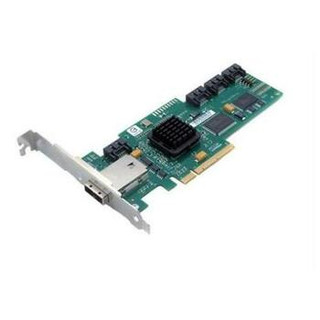In the rapidly evolving domain of IT hardware, ensuring seamless, fast, and secure connectivity across devices and networks is a top priority. LAN/WAN Modules serve as the backbone for data transmission, enabling communication across both local and wide-area networks. These modules are essential components of routers, switches, firewalls, and other computer hardware, providing scalable and adaptable solutions for data flow across diverse infrastructures.
From small businesses managing intranet systems to global corporations transmitting terabytes of data across continents, the demand for reliable LAN/WAN Modules has become indispensable. This article delves into the core functions, types, benefits, and integration of these network modules in today’s connected IT landscape.
What Are LAN/WAN Modules?
Defining LAN and WAN
LAN (Local Area Network): A LAN connects computers and devices within a limited geographical area like an office, school, or home.
WAN (Wide Area Network): A WAN covers larger geographic regions, allowing data communication between cities, countries, or even continents, often via public or private telecommunication systems.
What Are LAN/WAN Modules?
LAN/WAN Modules are specialized hardware components or add-on cards that enhance or enable network connectivity on devices like routers, switches, and firewalls. These modules facilitate the exchange of data by enabling access to LANs or WANs through various protocols and media types. They’re essential in computer hardware environments that demand consistent network uptime and high-speed data access.
Importance of LAN/WAN Modules in IT Hardware
Bridging Devices and Networks
LAN/WAN Modules are critical in connecting multiple networks and ensuring devices within a computer hardware setup can communicate effectively. These modules help bridge networks using different technologies and architectures, allowing for a seamless transfer of information.
Enhancing Network Performance
By supporting various speeds (10/100/1000 Mbps, 10G, 40G, or even 100G), LAN/WAN Modules contribute to optimized performance. They reduce network latency, minimize packet loss, and maximize bandwidth utilization.
Enabling Modular Scalability
Businesses often evolve over time, and LAN/WAN Modules offer modularity and scalability. Organizations can insert new modules to expand network capacity, integrate new technologies, or support additional protocols without overhauling the entire infrastructure.
Types of LAN/WAN Modules in Computer Hardware
1. Ethernet LAN Modules
These are among the most common types and are used for LAN connectivity. They support copper or fiber interfaces and often include:
RJ-45 Ethernet ports for standard connections
SFP/SFP+ interfaces for fiber links
Compatibility with Gigabit and multi-Gigabit speeds
2. Serial WAN Interface Cards
Serial WAN Modules support legacy and specialized WAN connections such as:
Frame Relay
PPP (Point-to-Point Protocol)
HDLC (High-Level Data Link Control)
These modules are typically used in government, telecom, or industrial sectors.
3. DSL and Broadband WAN Modules
For small and medium-sized businesses, DSL and broadband modules offer low-cost internet connectivity. They’re often integrated into branch routers.
4. Cellular WAN Modules (4G/5G)
These modules enable mobile broadband connectivity, offering remote sites a wireless WAN connection. They are essential in scenarios where wired infrastructure isn’t feasible.
5. VPN and Security Modules
Some LAN/WAN Modules come with built-in encryption and VPN functionality, enhancing data security. These are critical in IT hardware environments that require secure inter-site communication.
How LAN/WAN Modules Work Within Network Devices
Modular Slots in Routers and Switches
Modern enterprise-grade routers and switches come with expansion slots that accommodate different types of LAN/WAN Modules. This modular architecture allows IT managers to configure network devices according to the specific needs of their organizations.
Data Transmission and Routing
When a packet arrives at a network device, the LAN/WAN module handles the physical and data link layer functions, including framing, modulation, and signaling. It then forwards the data to the router’s processor for routing decisions.
Example: Cisco ISR Series Routers
Cisco’s Integrated Services Routers (ISR) support various LAN/WAN Modules, including Gigabit Ethernet, serial, DSL, and cellular modules. These routers exemplify how modular hardware enables flexible and secure WAN connectivity for enterprises.
Use Cases of LAN/WAN Modules Across Industries
Enterprise Branch Connectivity
Companies with multiple branch offices rely on WAN modules to establish secure, high-speed VPN tunnels or MPLS links between locations. LAN modules ensure in-office communication is fast and reliable.
Education Networks
Schools and universities deploy LAN modules in access switches to connect labs, classrooms, and admin areas. WAN modules link campuses and data centers for shared services.
Healthcare IT Infrastructure
In healthcare, secure WAN connectivity supports telemedicine, cloud-based patient record systems, and real-time imaging transfers, while LAN modules handle in-clinic communication.
Industrial IoT and Remote Monitoring
Industrial organizations use cellular WAN modules to monitor assets in remote or mobile environments like oil rigs, transportation fleets, or field sensors.
Benefits of LAN/WAN Modules in IT Hardware Architecture
1. Flexibility and Customization
LAN/WAN Modules offer plug-and-play flexibility, allowing IT administrators to customize their computer hardware infrastructure. Whether adding extra LAN ports, changing connectivity mediums, or upgrading to faster WAN interfaces, modules enable precise control.
2. Cost-Efficiency
Instead of replacing an entire router or switch, organizations can insert or replace modules as needed. This prolongs the lifecycle of the IT hardware and reduces capital expenditure.
3. Enhanced Network Uptime
Redundant module slots allow for high availability and failover designs. Hot-swappable modules minimize downtime during maintenance or upgrades.
4. Future-Proofing
Modular designs accommodate evolving networking standards. As new technologies like Wi-Fi 6E, 5G, or 100Gbps Ethernet become standard, LAN/WAN Modules can be upgraded accordingly.
Challenges and Considerations in Using LAN/WAN Modules
Compatibility and Standardization
Not all LAN/WAN Modules are universally compatible. Businesses must ensure their chosen modules are supported by the existing computer hardware, including routers and chassis.
Physical Space and Power Consumption
Some high-performance modules, particularly those supporting multi-gigabit or fiber interfaces, consume more power and require proper cooling.
Licensing and Configuration
Many modules, especially from enterprise vendors like Cisco, may require additional licensing. They also involve complex setup and configuration, which demands skilled network professionals.
Integrating LAN/WAN Modules with Modern IT Hardware
Smart Modular Platforms
Modern platforms like Cisco Catalyst, Juniper MX, or HPE FlexNetwork support smart modules that can self-configure or integrate with cloud-based network management tools.
Software-Defined Networking (SDN)
In SDN environments, LAN/WAN Modules serve as the physical interface to the network fabric, while control is managed centrally through software. These modules work with SDN controllers to deliver real-time network updates and telemetry.
IoT and Edge Deployments
Modules now support edge computing features, enabling processing at the data source. This is increasingly common in smart cities, smart grids, and industrial automation.
Comparing LAN/WAN Modules with Integrated Interfaces
| Feature | LAN/WAN Modules | Integrated Interfaces |
|---|---|---|
| Flexibility | Highly customizable | Fixed configuration |
| Cost Over Time | Economical through upgrades | Costlier when full replacement needed |
| Performance | Optimized per application | Standardized performance |
| Scalability | Easily scalable | Limited scalability |
| Deployment Complexity | Higher setup complexity | Easier to deploy |
Security in LAN/WAN Modules
Encryption and VPN Capabilities
Modules with built-in encryption offload secure processing from the main CPU. They often support:
IPsec
SSL VPN
MACsec
L2TP
This ensures that WAN connectivity remains secure even in public network environments.
Segmentation and Access Control
LAN modules support VLAN tagging and access control lists (ACLs), enabling segmented network environments for guest users, finance, HR, etc.
Monitoring and Telemetry
Modern modules provide built-in monitoring capabilities, including NetFlow, SNMP, and Syslog, for performance analysis and security auditing.
Vendor Solutions for LAN/WAN Modules
Cisco
Cisco’s modular routers and switches support a wide range of LAN and WAN interface cards (e.g., EHWIC, NIM, SM). Cisco Smart Licensing and DNA Center allow centralized management of these modules.
Juniper Networks
Juniper’s MX and SRX series support modular interfaces that cover Ethernet, serial, DSL, and more. Their Junos OS integrates seamlessly with SDN platforms.
HPE/Aruba
Aruba switches offer module slots for expansion of fiber uplinks, PoE ports, and multi-gig interfaces, supporting robust enterprise LAN environments.
Ubiquiti and MikroTik
For SMBs and prosumers, Ubiquiti and MikroTik offer modular routers with SFP ports and expansion bays, balancing cost and functionality.
The Future of LAN/WAN Modules
5G Integration
As 5G becomes mainstream, LAN/WAN Modules supporting high-speed mobile broadband will dominate remote site deployments and smart city infrastructure.
AI and Autonomous Networks
Future modules will integrate AI-driven processing for anomaly detection, bandwidth prediction, and traffic optimization.
Green Networking
Modules with low-power operation and eco-friendly designs are gaining traction as organizations aim to reduce the environmental footprint of their IT hardware.
Best Practices for Deploying LAN/WAN Modules
Audit Your Network Needs: Understand the specific requirements of your organization—speed, security, redundancy.
Choose the Right Vendor: Consider compatibility, support, and performance when selecting computer hardware with modular expansion.
Plan for Scalability: Deploy systems that can grow with your organization.
Secure All Interfaces: Apply encryption and access controls to both LAN and WAN modules.
Use Monitoring Tools: Keep visibility on data flows and performance using telemetry-enabled modules.
Conclusion: LAN/WAN Modules Empower Modern Networking
LAN/WAN Modules represent the intersection of flexibility, performance, and security in modern IT hardware design. These modular components empower businesses, educational institutions, healthcare providers, and industrial operations to create scalable, resilient, and high-performing networks.
As connectivity demands grow and network topologies become more dynamic, modular network components ensure your computer hardware stays adaptable to technological change. Whether connecting devices within a building or linking global offices via secure WANs, the role of LAN/WAN Modules is central to future-ready network infrastructure.















Leave a comment